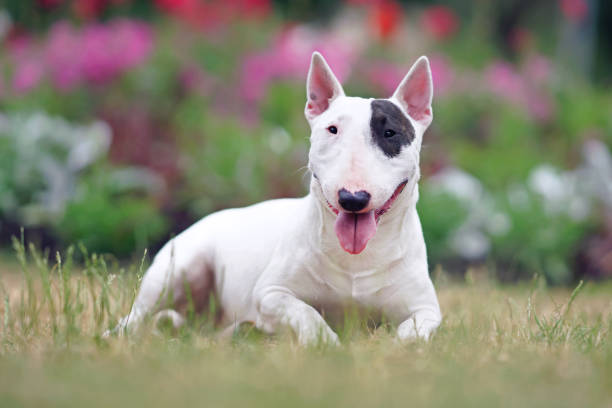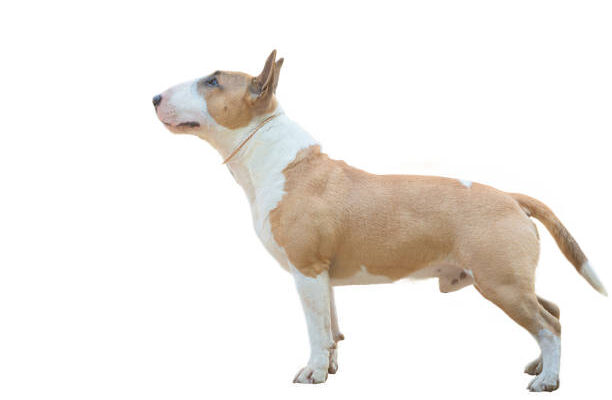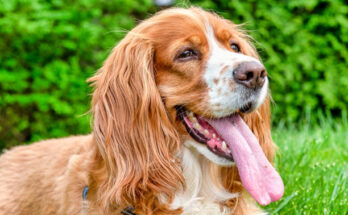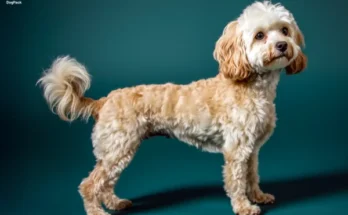The Bull and Terrier, a foundational ancestor of several popular modern breeds, holds a unique place in canine history. These dogs boast a strong physical presence, together with fighting spirit and bravery, which stemmed from their origins as fighters in dog contests and bull baiting events. The following guide provides extensive coverage of everything you need to know about Bull and Terrier dogs, including their creation story and their temperament aspects, alongside their appearance characteristics and training needs, and standard care requirements.
Table of Contents
- Introduction to Bull and Terriers
- History and Origin
- Physical Characteristics
- Personality and Temperament
- Training a Bull and Terrier
- Exercise and Activity Needs
- Nutritional Requirements and Diet
- Grooming and Hygiene
- Common Health Issues and Preventive Care
- Socialization and Behavior
- Living Conditions and Adaptability
- Fun Activities and Games
- Conclusion
Introduction to Bull and Terriers
Historians use Bull and Terrier as an historical label which describes mixbreed canine dogs when Bulldogs united with Terriers. The English breeders produced these dogs during the 19th century because they possessed their strong muscular body and energetic disposition.
Bull and Terrier adaptation survives in three modern descendants who share their characteristics with the Staffordshire Bull Terrier and Bull Terrier and the American Pit Bull Terrier. These descendants retain the core traits of their ancestors: loyalty, fearlessness, and a keen sense of purpose.
History and Origin
Bred for Performance and Power
During the early 1800s, British breeders unified English Bulldog power with Terrier fighting spirit and agility to create the Bull and Terrier. Breeders produced the Bull and Terrier through their specific cross between the English Bulldog and Terrier breeds.
Roles in Blood Sports
During the creation of these dog breeds the priority was using them to fight both in dog fights and bull-baiting events. These dogs gained popularity in dangerous blood event arenas because of their powerful muscles combined with their aggressive heroism as well as their ability to handle pain. After blood sports became illegal the breeding community started to recreate this breed into an affectionate family companion and show competitor.
From Utility to Companionship
After slavery became illegal, many Bull and Terrier dog breeds received additional genetic changes focusing on their behavior and physical features, thus creating the following breeds:
- The Bull Terrier (recognized by its egg-shaped head)
- Staffordshire Bull Terrier (known for its compact size and affectionate nature)
- American Staffordshire Terrier and American Pit Bull Terrier (more prominent in the U.S.)
Fun Fact:
During the 1800s James Hinks became recognized for his work of transforming Bull and Terriers into today’s Bull Terrier by developing a neat look and friendly personality.
Physical Characteristics

Size and Build
- Height: 14–22 inches (varies by subtype)
- Weight: 30–70 pounds
- Build: Muscular, compact, and athletic
Bull and Terriers have a strong, well-balanced frame suited for both strength and agility.
Coat and Color
- Coat Type: Short, smooth, and dense
- Colors: White, brindle, black, fawn, red, or combinations thereof
- Shedding: Moderate
Regular brushing of Bull and Terriers contributes to less shedding and maintains their coat shine while the dogs require minimal grooming effort.
Personality and Temperament
What Are Bull and Terriers Like?
Bull and Terriers display traits of bravery combined with high energy levels and deep affection toward people. Their fighting-dog lineage has granted them powerful tenacious personalities while their ancestry has also given them great affection toward their family members.
They possess both intelligence and mischievousness as characteristics, which leads them to perform comedic tricks for human interaction.
Are Bull and Terriers Good Family Dogs?
A trained and appropriately socialized Bull and Terrier breed proves to be an outstanding family companion. Children naturally gain affection from these dogs while Bull and Terriers flourish best in families that make them essential members of daily life.
Bull and Terrier dogs need constant supervision with children because of their strong physical abilities.
Are Bull and Terriers Good Guard Dogs?
Absolutely. By nature Bull and Terriers exhibit qualities of alertness mixed with courage and confidence. Bull and Terriers stay quiet until a threat presents itself which triggers an immediate defensive action to protect their property.
Training a Bull and Terrier
Intelligence and Trainability
These dogs possess both brilliant learning abilities along with self-willed independence as well as the habit of defying commands. Positive results in training are achieved through steady yet firm approaches.
Training Tips:
The owner should implement positive reinforcement training methods combined with treats and games, together with praise.
Introduce clear rules along with regular habits soon after adoption.
The combination of harsh corrections does not function well in terms of dog discipline.
Short training breaks should be included in your routine to fight boredom during the sessions.
Socialization
Getting socialized at an early age and maintaining continuous interactions serve as crucial requirements. The interaction with different types of people combined with pets and environmental exposure leads to mature development of well-balanced adults who do not act aggressively.
Signing up for puppy training programs while planning systematic meetings between your dog and approachable humans and other dogs in supervised settings.
Exercise and Activity Needs
Daily Exercise Requirements
Bull and Terriers demand daily exercise between 60 to 90 minutes for their physical fitness as well as their mental stability.
Physical Activities:
- Brisk walks or jogs
- Tug-of-war
- Agility courses
- Playtime in secure yards
Mental Stimulation
Insufficient mental stimulation may cause Bull and Terriers to become destructive. The existence of Bull and Terriers depends heavily on receiving challenges combined with interactive work assignments.
Brain Games:
- Puzzle toys and slow feeders
- Trick training
- Hide-and-seek games
- Scent detection activities
Nutritional Requirements and Diet
Recommended Diet
The proper diet for Bull and Terrier breeds consists of proteins in abundance, coupled with moderate fats. Most owners feed their Bull Terriers either high-quality dry kibble or dietary options approved by veterinarians.
Ideal Ingredients:
- Lean meat (beef, chicken, turkey)
- Fish (salmon for omega-3s)
- Brown rice or sweet potatoes
- Carrots, blueberries, and green vegetables
Feeding Schedule
- Puppies: 3–4 meals per day
- Adults: 2 meals daily
Overfeeding should be avoided since Bull and Terriers gain weight very quickly. Each Bull and Terrier requires easy access to a constant supply of fresh water at all times.
Grooming and Hygiene
Grooming Routine
The Bull and Terrier has simple grooming requirements for its coat, while needing regular attention.
Grooming Essentials:
- Brushing: 1–2 times a week with a bristle brush
- Bathing: Every 4–6 weeks or as needed
- Nail Clipping: Every 2–3 weeks
- Ear Cleaning: Weekly to prevent buildup
- Teeth Brushing: At least 2–3 times per week
Skin Care Note:
The skin sensitivities and allergy problems are more common in Bull and Terriers who have white coats. Hypoallergenic dog shampoos should be used according to package instructions while observing any skin reactions.
Common Health Issues and Preventive Care
Common Health Concerns
The Bull and Terrier types remain healthy but may develop specific health problems affecting their overall welfare.
- Hip Dysplasia
- Allergies (especially skin allergies)
- Patellar Luxation
- Heart Disease
- Deafness (particularly in white-coated dogs)
Preventive Measures
- Annual vet checkups
- Regular parasite prevention
- Monitor joints, ears, and skin health
- Maintain a healthy weight
- Feed a nutritious, balanced diet
Socialization and Behavior
Socialization Tips
The early introduction of the Bull and Terrier to social situations produces the best outcomes.
- Take them to busy places (pet-friendly stores, parks)
- Invite guests to your home
- Attend training or obedience classes
- Reward calm, confident behavior
Behavioral Traits
- Energetic: Always ready to play or work
- Bold: Not shy or timid
- Loyal: Deep bond with owners
- Protective: Will guard home and loved ones
- Stubborn: Needs consistent training
Living Conditions and Adaptability
Ideal Living Environments
Bull and Terriers possess the durability to succeed in different accommodation settings if owners fulfill their exercise requirements.
Best-Suited Homes:
- Suburban or rural homes with fenced yards
- Apartments with active owners and ample outdoor time
Climate Sensitivity
- Cold Weather: Tolerable with proper protection
- Hot Weather: Caution is advised—ensure plenty of shade and hydration during warm months
Fun Activities and Games
Bull and Terriers love playful activities which they enjoy in well-organized ways.
Best Games for Bull and Terriers
- Fetch: Great for exercise and impulse control
- Agility Training: Keeps them focused and fit
- Tug Games: Helps burn energy and strengthen bonds
- Obstacle Courses: Use household items or dog parks
Enrichment Toys
- Food-dispensing puzzles
- Rubber chew toys
- Scent-work kits
- Hide-the-treat games
Conclusion
The Bull and Terrier represents one of the most important dog types in history because it gave birth to many breeds currently in existence. Their families gain everlasting devotion along with enthusiastic affection by implementing structured training and providing enough exercise and consistent socialization.
Key Takeaways:
The Bull and Terrier type embodies intelligence combined with willful nature while showing deep affection toward their people.
Such dogs need daily physical activity combined with mental stimulation to avoid developing behavioral problems.
To develop a balanced temperament, both training and socialization need to be instilled at an early stage.
They have simple grooming requirements, although their skin and allergies need appropriate attention.
Proper pet care develops Bull and Terriers into loving, faithful pets that will bring happiness to their family.
The choice to get a Bull and Terrier dog means selecting an embodiment of historical canine bravery and deep devotion along with energetic personality.





Greetings! I’ve been reading your site for some time now and finally got the courage to go ahead and give you a shout out from Dallas Texas! Just wanted to mention keep up the good job!